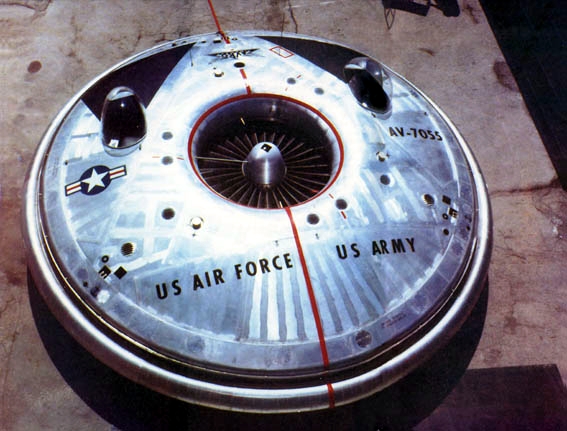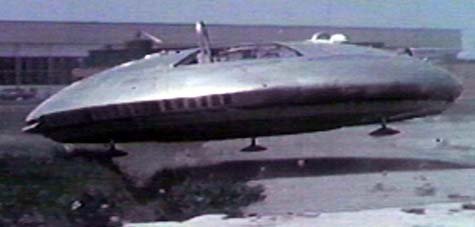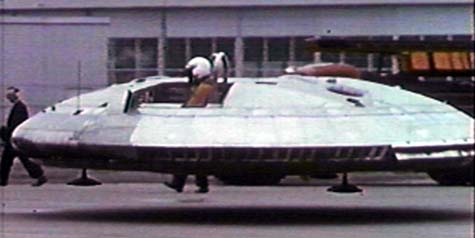

TARGET 060705VZ-9A AVROCAR 1
|
Development sponsored by The US Air Force and The US Army. |

|
The AVRO Canada VZ-9A AVRO car was designed, built and tested just outside Toronto was unique in the annals of flight. Shaped like an obese discus, it was intended to use a novel flight mode called GETOL - Ground Effect Takeoff and Landing. The machine would lift into ground effect on a cushion of air expelled from a peripheral slot on its underside and directed by a sliding "focusing ring." The ring would then "focus" the cushion rearward, driving the flying saucer forward. The strange craft would thus taxi in ground effect until it had enough forward speed to climb out of ground effect and fly like a conventional airplane. |

|
In actuality, the prototype never flew out of ground effect. To solve problems of stability in ground effect the designers came up with a pneumatic analogue control system using the huge vertical-axis lift fan as the sensing element. The obvious wobbliness of the ship in its original configuration completely disappeared thanks to this light, simple solution. |
The U.S., Canada, Great Britain, and Germany all had versions of the "flying disk" technology. To access more information about the Avrocar and the similar technologies of the other countries, click here and follow the page's many links to other pages on this interesting technology. |